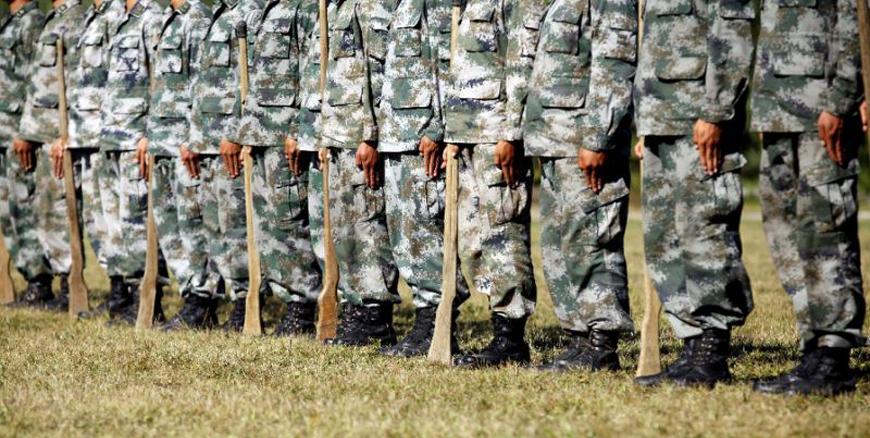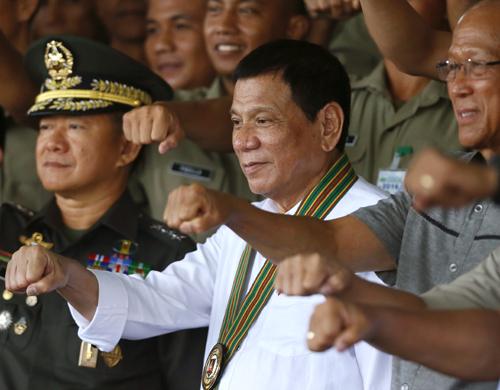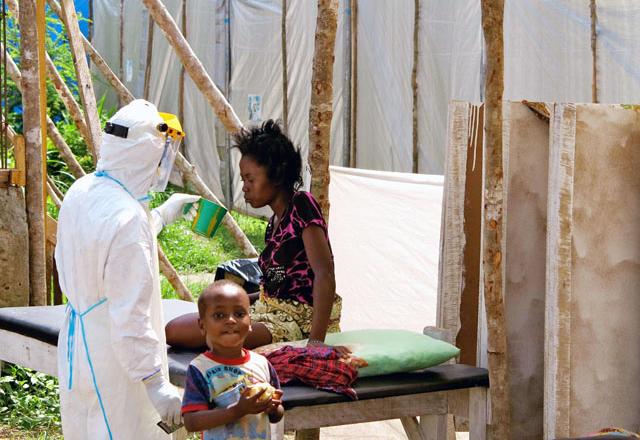You are here
Military spending rises again in 2015
By Agencies - Apr 05,2016 - Last updated at Apr 05,2016

Rising tensions worldwide helped push up military expenditure in 2015 primarily in Eastern Europe, Asia and the Middle East (AFP photo)
STOCKHOLM — World military spending rose 1 per cent in 2015, the first annual increase in four years, a Stockholm think tank said on Tuesday as it estimated 10 per cent of this could cover the costs of global goals aiming to end poverty and hunger in 15 years.
The Stockholm International Peace Research Institute (SIPRI) said military expenditure nudged up to almost $1.7 trillion last year, with the United States accounting for by far the greatest amount despite its spending dipping 2.4 per cent to $596 billion.
China was the second largest spender for the second year in a row with spending up 7.4 per cent to $215 billion, while Saudi Arabia passed Russia to take third place at $87.2 billion and Britain came fifth. Moscow spent $66.4 billion.
During the 10-year period from 2006-2015, the US military budget shrank by 4 per cent, while China's soared by 132 per cent. Those of Saudi Arabia and Russia also increased significantly, by 97 and 91 per cent respectively.
France, which had the fifth biggest budget in 2014, fell to seventh place behind Britain and India.
SIPRI said military expenditure amounted to 2.3 per cent of the global gross domestic product, and 10 per cent of this would be enough to fund the global goals agreed upon by United Nations' 193 member states in September to end poverty and hunger by 2030.
"This gives some sort of perspective that can allow people to see what is the opportunity cost involved with global military spending," Sam Perlo-Freeman, head of SIPRI's military expenditure project, told the Thomson Reuters Foundation.
"This could stir up some debate although we are certainly not expecting a 10 per cent cut in military spending at all," he said. "That is all about the politics of these countries."
UN figures show an estimated 800 million people live in extreme poverty and suffer from hunger, with fragile and conflict-torn states experiencing the highest poverty rates.
SIPRI's annual military spending report showed overall expenditure increased last year in Asia, Central and Eastern Europe and for Middle East countries with data available.
However spending fell in North America, Western Europe, Latin America and the Caribbean, and Africa, a continuing trend attributed partly due to the global economic crisis, falling oil prices and the withdrawal of troops from Afghanistan and Iraq.
"On the one hand, spending trends reflect the escalating conflict and tension in many parts of the world; on the other hand, they show a clear break from the oil-fuelled surge in military spending of the past decade," Perlo-Freeman said.
"This volatile economic and political situation creates an uncertain picture for the years to come," he added.
Countries that bumped up military spending in 2015 included Algeria, Azerbaijan, Russia, Saudi Arabia and Vietnam, many of which were involved in conflict or faced heightened regional tensions.
Perlo-Freeman said this was the first time SIPRI has mapped military spending to the UN's new Sustainable Development Goals but it had previously compared it to spending on health and education.
The SIPRI military expenditure project was established in 1967 to study developments in world military expenditure.
"It is no secret that we are a peace research institute and our mission is towards promoting peace and demilitarisation, but we don't say how this should be done," he added.
Related Articles
China has eased ahead of Germany and France to become the world’s number three arms exporter after the United States and Russia, a Stockholm-based think tank said Monday.
WASHINGTON — Philippine President Rodrigo Duterte would face major obstacles to following through on his threat to reduce purchases of US we
So while a western corner of Africa writhes in the deadly grip of the Ebola virus, there are signs this emergency may serve as a wake-up call to strengthen spending and investment on public healthcare in the world's least developed continent.

















